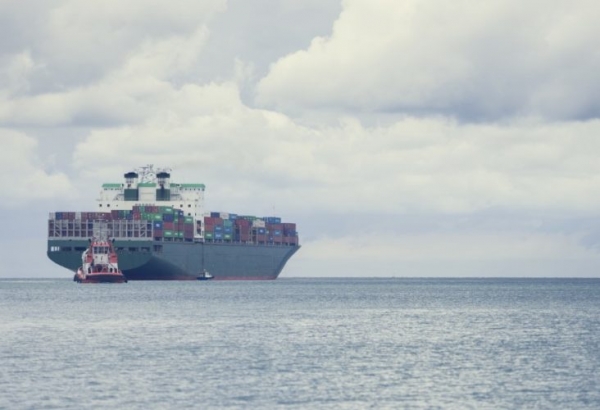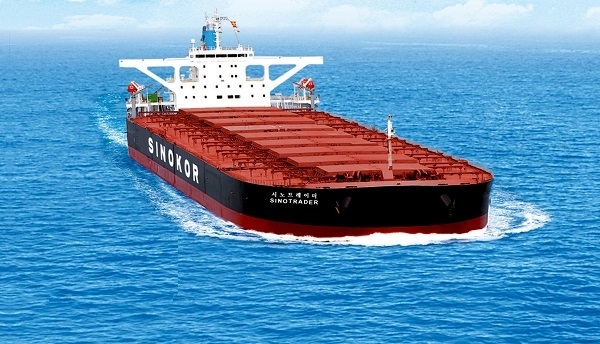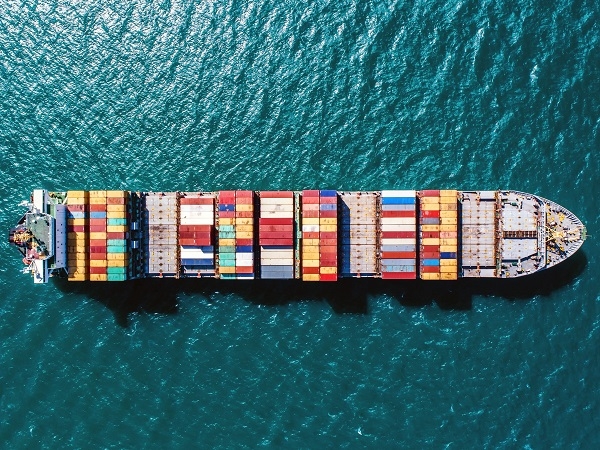Trade War Is the Best Thing that Happened to Container Shipping
The end of the escalating trade war between the world’s two super-powers, China and the United States, seems to be on the horizon as the two sides near a deal on ending the tit-for-tat tariffs on export and import of goods.
Following a truce at the end of 2018 and the ensuing trade talks, the focus now is on the enforcement mechanism aimed at making sure the US and China meet their commitments allowing for the tensions to cool down.
According to US Treasury Secretary Steven Mnuchin, the bilateral trade talks have resulted in a mechanism to police the yet-to-be-unveiled trade agreement, which will entail establishment of new enforcement offices and repercussions for whomever fails to meet their end of the deal.
Even though the trade tariffs have had an adverse impact on the shipping market, especially for bulkers and tankers, there are industry leaders that believe the trade tensions were favorable for the container shipping market fundamentals overall.
Speaking at Capital Link’s 13 Annual International Shipping Forum, in a panel dedicated to container shipping, George Youroukos, Executive Chairman of Global Ship Lease, said that the “trade war is the best thing that happened to container shipping in the last few years.”
“Our industry is cyclical not because we have a cyclical demand – every year the demand is bigger than the last year. The reason we have a cyclical market is because of the supply, and the trade war has put the supply in check, putting a break on the ordering of new ships,” he added.
As explained, the lack of new ordering has paved the way for the lowest order book the industry has had in decades. This is very important having in mind that the container shipping sector has been battling choppy waters over the past few years especially due to overcapacity.
Furthermore, Youroukos pointed out that he was not worried about the trade wars as he doesn’t believe the production of goods could be switched from the Far East to the Western hemisphere, hence there is no room to fear about trade wars having a major impact on the global container shipping patterns.
Commenting on the trade tariffs, Howard Finkel, Executive Vice President of COSCO Shipping Lines (North America), said that the company hasn’t seen a huge effect on trade as tariffs on certain imports that would have had a greater effect haven’t been put in place yet.
Specifically, in December 2018, Trump agreed to leave the tariffs on USD 200 billion worth of product at the 10% rate, and not raise it to 25% during the 90-day tariff ceasefire.
Nevertheless, Finkel said that there has been a great deal of overbooking over the last six months, as shippers try to beat the tariffs.
Due to overbooking, the West Coast ports of Long Beach and Los Angeles have been experiencing congestion due unprecedented import volumes as larger vessels are being deployed to accommodate increased cargo volumes as tariff deadline looms.
Every aspect of port operations, from labor and equipment supply to vessel and yard operations, to truck and rail availability is being stretched and contributing to congestion, gridlock and delays, as explained earlier by Taiwanese shipping company Yang Ming.
However, commenting on the potential outcome of the trade talks Finkel voiced his hope that “cooler heads would prevail”, allowing for the situation to normalize.
Outlook for the Container Shipping Market
Over the recent period the container shipping market has undergone numerous changes, with major consolidation wave shrinking the number of carriers present in the market and companies switching to different alliances.
Referring to claims from European authorities that container shipping alliances raise competition concerns in what has become a concentrated market, Finkel said that despite the fact that there are fewer carriers now, the market remains “brutally competitive.”
“I really believe that you need to be in a strong alliance to keep your operating costs down,” he added.
Cao Deambrosio, Managing Partner at Seamax Capital Management is bullish on the prospects of the container shipping market. Specifically, charter rates have been on the rise since the beginning of 2019 and utilization rates are going up as well, he pointed out.
“The upcoming fuel change and resulting slow-steaming, together with vessels getting taken out of service for scrubber fittings should help the supply side. Assuming the demand stays the same and people don’t get overly excited with newbuilding orders, we should be in pretty good shape for the next few years,” Deambrosio pointed out.
Youroukos added that the industry is already seeing containerships slowing down by one to two knots due to the global sulphur cap entering into force in 2020, stressing that ships trading on all services are expected to slow down. As a result, liner companies will see reduced operating costs bringing about at the same time the absorption of the extra capacity in certain trades.
Speaking on the IMO 2020, Finkel said that the industry needs to agree on the right bunker formula to avoid potential detrimental effects on ships from fuel contamination, stressing that COSCO plans to meet the new regulation by switching to low-sulphur fuel.
“The impact of the fuel switch stemming from the IMO 2020 is going be the determining factor in whether the liner companies are going to be profitable or not in 2020,” Finkel noted, highlighting the overall importance of the regulation on the container shipping market.
Image Courtesy: PxHere under CC0 Creative Commons license; Written by Jasmina Ovcina Mandra
Reference:worldmaritimenews.com
Korean Sinokor, Heung-A Combine Container Shipping Services
South Korean liner shipping companies Sinokor Merchant Marine and Heung-A Shipping will begin integrating their container shipping service businesses next week.
With the combination of services, the duo intends to achieve economies of scale and improve competitiveness in a challenging market.
The integration of services will be followed by a full merger of the two companies in October 2019.
On April 11, 2019, the two parties signed an agreement on the integration of container shipping services, according to a statement issued by Korean Ministry of Oceans and Fisheries (MOF).
The deal is a follow-up to the Korea Shipping Partnership launched by South Korean container carriers back in 2017. The partnership is aimed at strengthening the country’s shipping industry following the collapse of Hanjin Shipping.
Sinokor and Heung-A are to integrate offices and routes in phases, with the Southeast Asia route to be merged first and China/Japan, Korea/Japan routes until December 2020, as explained by the ministry.
Once the process is finalized, the new shipping company will be the third largest in South Korea and the world’s 19th, with a capacity of nearly 90,000 TEU.
Reference: worldmaritimenews.com
BIMCO: Container Shipping May Face Bankruptcies if It Fails to Recover Extra Fuel Costs
A failure to recover the extra fuel costs in full may result in bankruptcies in the container shipping industry, international shipping association BIMCO said.
As the starting line for the International Maritime Organization (IMO) sulphur cap approaches, the dominant theme of 2019 will be the sharing of the higher costs that are expected in various forms towards the end of the year, according to the association.
These extra costs will come either as a result of purchase of fuels, which are more expensive than heavy sulphur fuel oil (HSFO), or investments in abatement technologies that will allow carriage and consumption of HSFO.
As explained, profit margins in this industry will be reduced everywhere unless these costs are passed on to the end customer through the whole supply chain. According to BIMCO, the ability of container shipping to pass on increases depends on its negotiating power and a fundamentally strong freight market.
Moreover, BIMCO said that the gloomy outlook in container shipping seems certain for this year and is likely to be extended.
Containerized imports in Europe look likely to be stuck with demand growth of no more than 2% for years to come. That means the long-hauls into northern and southern Europe, where ultra large containerships are perfectly suited to reap the benefits of economies of scale, will suffer unless cascading is accelerated.
As the US East Coast ports are now fully equipped with cranes to cater for ultra large containerships, the nation saw strong import growth into the US via this route in 2017 (10%) and again in 2018 (8%). More cargo is likely to follow this trend, away from the more crowded options of the US West Coast. Despite this, BIMCO forecasts overall imports into the US will be lower in 2019 when compared with 2018.
The higher growth rates are expected on North-South trades, highlighting South America and imports into Africa as places where volumes – but not so much freight rates – could improve in 2019.
The annual contracts for transpacific cargoes – normally running from May to April – are negotiated soon. Although higher freight rates are expected, tough and difficult negotiations lie ahead, as markets have weakened somewhat since Q4 2018.
Looking into 2019, BIMCO is forecasting a 3.4% container-fleet growth rate, assuming demolition levels remain low. Should the initial demolition level, set at 100,000 TEU, turn out to be twice as high, fleet growth in this shipping industry will be reduced by 0.5% to 2.9%.
Reference: pmo.ir
Quick contact

 English (UK)
English (UK)  Deutsch (Deutschland)
Deutsch (Deutschland)  Türkçe (Türkiye)
Türkçe (Türkiye)  Arabic (ar)
Arabic (ar)  Русский (Россия)
Русский (Россия)  (پارسی) Persian
(پارسی) Persian  简体中文(中国)
简体中文(中国) 








